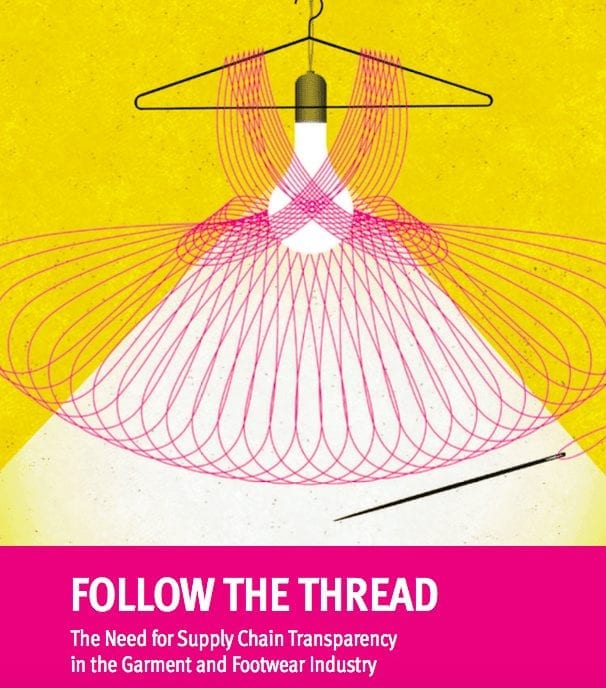
Follow the Thread: the Need for Supply Chain Transparency in the Garment and Footwear Industry
EXCERPT FROM PUBLICATION:
“This report takes stock of supply chain transparency in the garment industry four years after the industry disasters in Bangladesh and Pakistan that shook the global garment industry. To build momentum toward supply chain transparency and develop industry minimum standards, a coalition of labor and human rights groups asked 72 companies to agree to implement a simple Transparency Pledge. It also asked that companies declining to commit to the Pledge provide reasons for choosing not to do so. Where companies engaged with the coalition, the coalition also sought additional information about their existing transparency practices. This report explains the logic and the urgency behind the Pledge and describes the responses we received from the companies contacted. Further information about the apparel companies contacted, the reasons for choosing them, and the coalition’s engagement process is outlined in Appendix I. Supply chain transparency practices vary immensely among companies. Among those apparel companies that embrace transparency, the details they publish are inconsistent. Many other companies refuse to publish supplier factory information at all, or divulge only scant information. Some companies attempt to justify non- disclosure on commercial grounds. But their explanations are belied by the experiences of other similarly situated companies that do publish and have shown that the benefits of disclosure outweigh perceived risks. Ultimately apparel companies can do far more than implement the Pledge to ensure respect for human rights in their supply chains. Nonetheless, this is one important step in a holistic effort to improve corporate accountability in the garment industry.”
